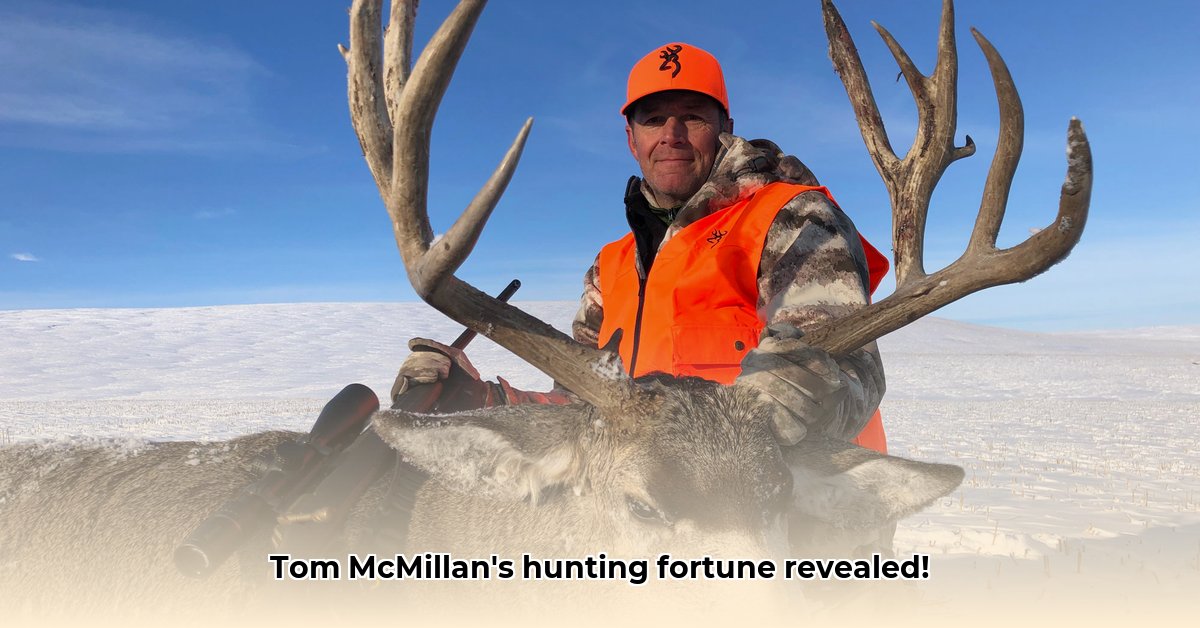
While the specifics of Tom McMillan's net worth remain undisclosed, the remarkable story of McMillan Outfitting, his expansive hunting operation, provides a compelling case study in sustainable business practices within the outdoor industry. Operating for over two decades on 8,000 acres in west-central Kansas, McMillan Outfitting presents a crucial question: Can a profitable hunting business truly thrive while prioritizing environmental protection? This isn't solely about financial success; it’s about the long-term health of the land and the future of hunting itself. For more on McMillan's financial success, see his net worth here.
The Scale of Operations and Environmental Considerations
McMillan Outfitting is far from a typical hunting operation. A 3,000 square-foot lodge and a 2,500 square-foot "Rut Hut" serve hunters on this vast property. This impressive scale inevitably raises questions about its environmental footprint. How much water is consumed? How is waste managed? What is the impact on local wildlife and habitats? These are crucial considerations in assessing the true sustainability of the operation. Does this impressive infrastructure outweigh the potential environmental benefits of a well-managed hunting program?
The very act of hunting whitetail deer for profit presents inherent complexities. Maintaining a healthy deer population while generating revenue requires a delicate balance. Overhunting can easily disrupt the ecosystem, undermining the business's foundation. It's a challenging equilibrium between economic needs and ecological well-being.
Navigating Challenges and Exploring Solutions
While specific data on McMillan Outfitting's environmental practices is unavailable, we can examine likely challenges and propose solutions based on industry best practices.
Likely Challenges:
Deer Population Management: Precise tracking of deer numbers is essential to prevent overhunting. This demands understanding the land's carrying capacity – the maximum number of deer the ecosystem can support sustainably. Failure to do so could lead to ecological imbalance.
Habitat Preservation: Large-scale hunting operations can strain the environment. Protecting habitat health requires proactive measures, including restoring degraded areas and implementing responsible grazing practices. Are McMillan's hunting practices helping or hindering this essential aspect of a thriving ecosystem?
Waste Management: A sizable operation hosting numerous hunters generates significant waste. Effective waste disposal is critical to minimizing pollution and conserving water resources. What responsible waste management strategies might be appropriate here?
Potential Solutions:
Independent Environmental Audit: A comprehensive audit provides a baseline assessment of the operation’s impact on a range of factors including water usage, waste generation, habitat alterations, and energy consumption. This provides crucial data for informed decision-making.
Data-Driven Management: Collaboration with wildlife experts and use of accurate population monitoring data is vital for guiding harvest decisions to support long-term deer population health. Are data-driven methodologies currently in use at McMillan Outfitting?
Investing in Land Regeneration: Reforestation projects, soil health improvements, and habitat restoration can significantly mitigate the environmental impact. The extent and nature of any such investments remain unknown.
Stakeholder Engagement: Open communication with local communities, conservation groups, and government agencies fosters collaboration and leads to more effective sustainable practices. What level of community and regulatory engagement does McMillan Outfitting currently engage in?
McMillan Outfitting: A Case Study in Sustainable Growth
Although Tom McMillan's net worth remains private, McMillan Outfitting's success depends on its commitment to sustainability. It's a constant balance between economic viability and environmental responsibility. The decisions made now will shape its future and influence other hunting businesses’ approaches to ecological sustainability.
Transparency and the Future of Ethical Hunting
To fully assess the long-term sustainability of such operations, more transparency and data are needed. Rigorous data collection, public reporting, and collaborative efforts are crucial for understanding and managing environmental impact. This isn't just about maximizing profit; it's about securing the future of ethical and sustainable hunting.
Measuring the Environmental Impact of Sustainable Hunting Practices
Key Metrics:
- Wildlife Population Density: Regular surveys, camera trapping, and population modeling can determine the number of animals per unit area.
- Habitat Health: Vegetation surveys, soil analysis, and water quality testing can assess the overall ecosystem health.
- Waste Management Efficiency: Waste audits and tracking waste removal can gauge the effectiveness of waste disposal strategies.
- Hunter Compliance: Monitoring hunting permits, compliance checks, and gathering feedback from hunters are important for assessing adherence to regulations.
The long-term success of McMillan Outfitting, and its broader impact on the hunting industry, hinges on its ability to fully integrate sustainability into its core operations. It’s a complex challenge, but one that merits careful study and discussion. The lessons learned will benefit the entire hunting and eco-tourism sectors.